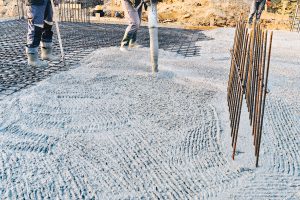
Photo © www.bigstockphoto.com
Earlier this month, ASTM International published its revised ASTM F2170, Standard Test Method for Determining Relative Humidity in Concrete Floor Slabs Using in situ Probes. The updated standard reduces the mandatory wait period before obtaining official, documentable results from an in-situ relative humidity (RH) moisture test performed in concrete floor slabs from 72 to 24 hours.
This significant reduction in wait time allows contractors and flooring installers to take action on RH test results a full two days earlier than previously allowed. It should also enable professionals to accelerate their construction and remodeling projects.
The update was in response to an ASTM-commissioned precision and bias (P&B) inter-laboratory study conducted in 2014. The study documented the temperature and RH readings of in-situ RH probes at various times within the old 72-hour window, including at the 24-hour mark. The study’s findings confirmed the readings obtained at 24 hours were statistically equivalent to the ones taken at 72 hours. Additionally, the revision supports RH testing as the preferred concrete moisture test.
“What is a game changer for flooring professionals is that with the revised F2170 standard, they can now take action after just one day instead of having to wait three days,” said Jason Spangler, a flooring expert. “No other industry-accepted test method for concrete moisture offers such fast results, and certainly none are more reliable or accurate than the RH test.”
ASTM first published its F2170 standard in 2002 in response to Scandinavian research detailing many of the advantages of employing RH testing to prevent moisture-related flooring failures. The P&B study lends further credence to the scientific superiority of RH testing over surface-based moisture condition test methods.




